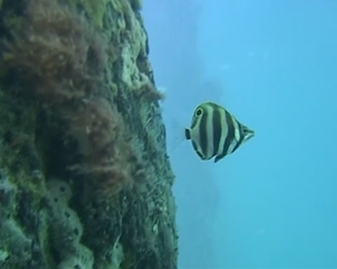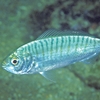General Description
Body deep, compressed, oval; head small, snout concave; dorsal and anal fins long-based, with scaly basal sheaths; tail large, slightly concave. Silvery white with five or six broad vertical black bands. Juveniles resemble tropical butterfly fishes, and like them have ocelli on the rear of the dorsal and anal fins. To 40 cm.
Biology
Juveniles prefer shallow protected reef, seagrass beds, and tide pools, while adults often occur in pairs near rocky ledges.
Habitat
Coastal rocky reefs, in 1-20 m.
Reefs
Distribution guide
Southern Australia, including western and central Victoria.
Species Group
Depth
Shallow (1-30 m)
Deep ( > 30 m)
Water Column
Max Size
40 cm
Diet
Carnivore
Commercial Species
No
Global Dispersal
Native to Australia
Conservation Status
- DSE Advisory List : Not listed
- EPBC Act 1999 : Not listed
- IUCN Red List : Not listed






